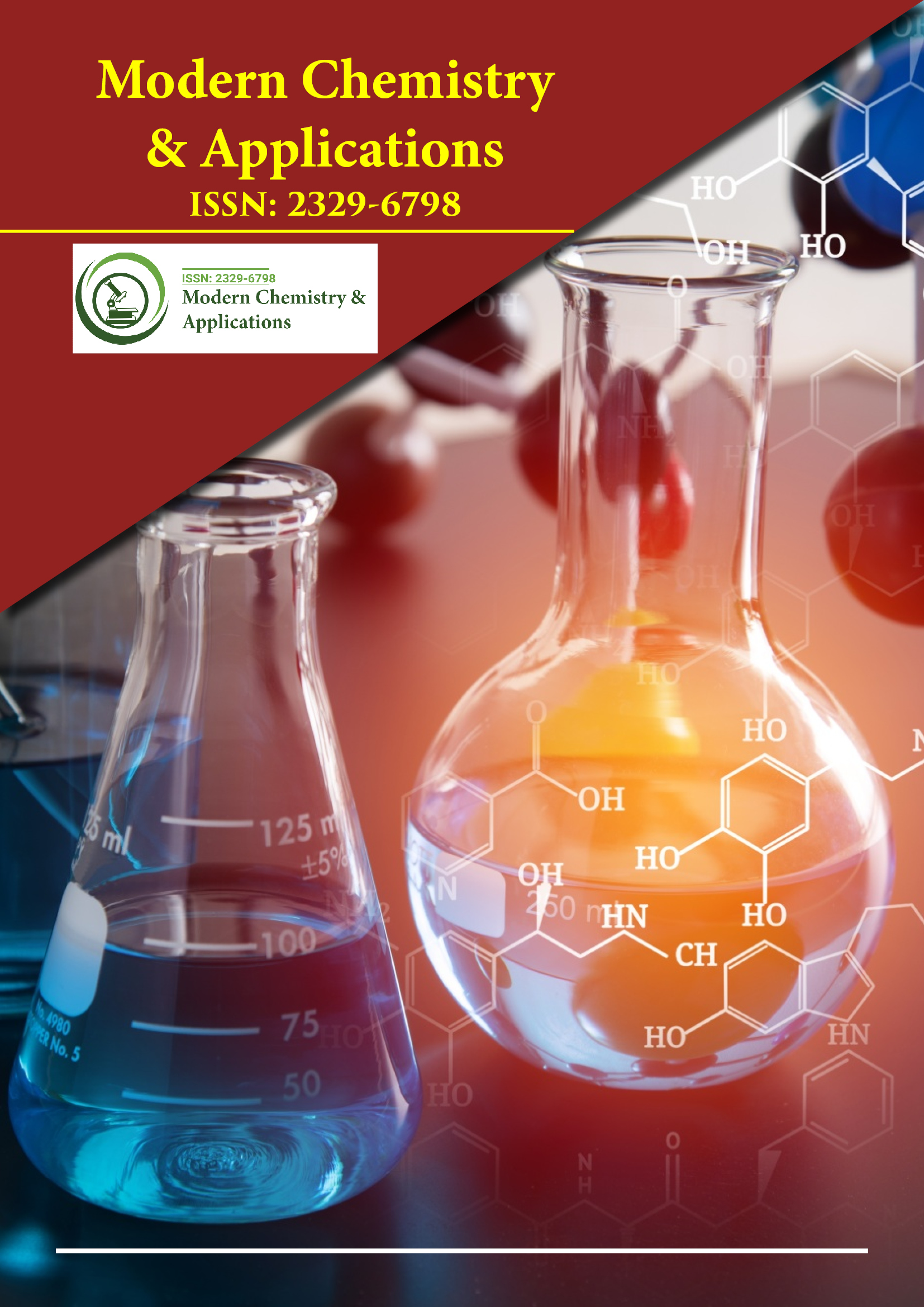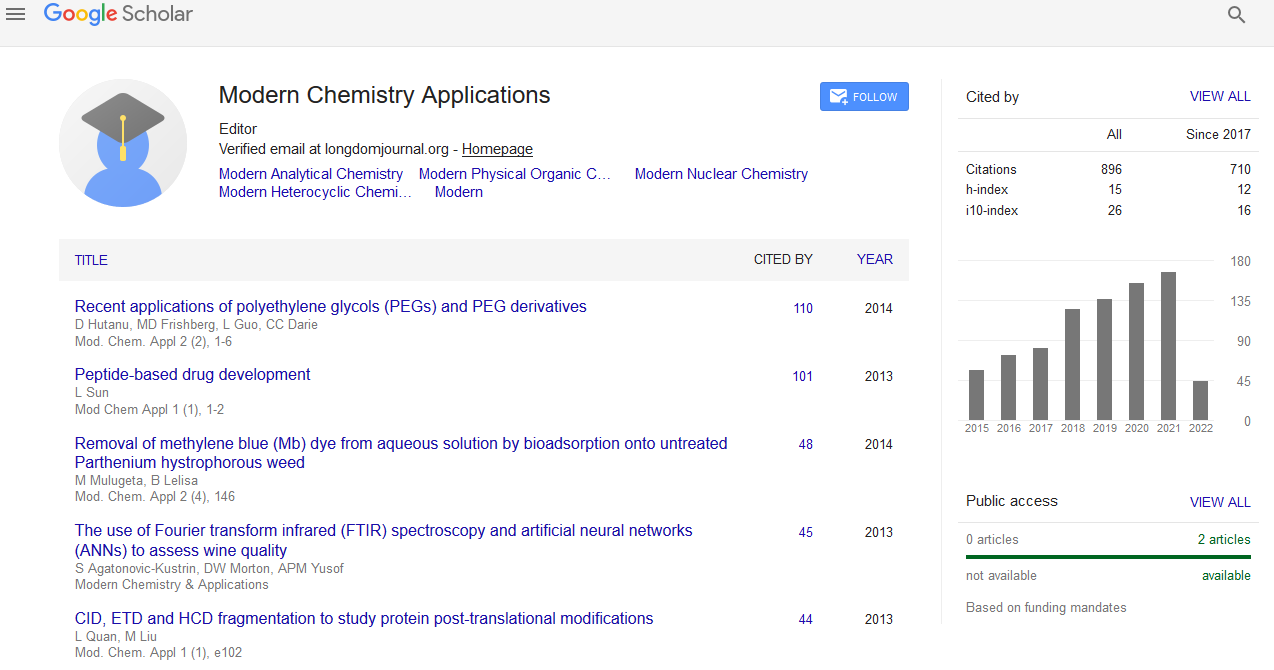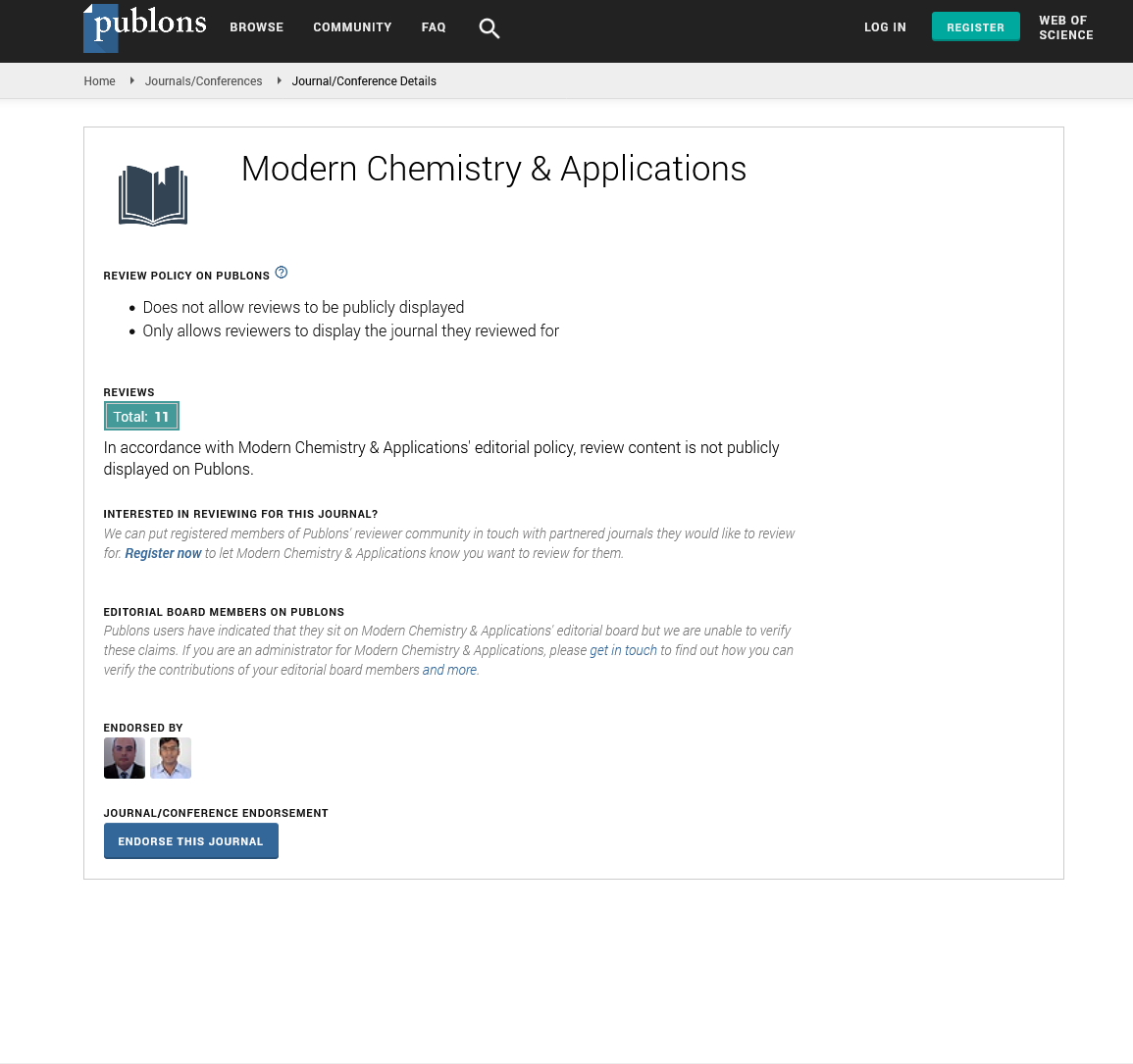Indexed In
- Open J Gate
- JournalTOCs
- RefSeek
- Hamdard University
- EBSCO A-Z
- OCLC- WorldCat
- Scholarsteer
- Publons
- Geneva Foundation for Medical Education and Research
- Google Scholar
Useful Links
Share This Page
Journal Flyer

Open Access Journals
- Agri and Aquaculture
- Biochemistry
- Bioinformatics & Systems Biology
- Business & Management
- Chemistry
- Clinical Sciences
- Engineering
- Food & Nutrition
- General Science
- Genetics & Molecular Biology
- Immunology & Microbiology
- Medical Sciences
- Neuroscience & Psychology
- Nursing & Health Care
- Pharmaceutical Sciences
Opinion Article - (2025) Volume 13, Issue 1
Design and Optimization of Catalytic Processes for Efficient and Scalable Chemical Reactions
Ayse Demir*Received: 26-Feb-2025, Manuscript No. MCA-25-29062; Editor assigned: 28-Feb-2025, Pre QC No. MCA-25-29062 (PQ); Reviewed: 14-Mar-2025, QC No. MCA-25-29062; Revised: 21-Mar-2025, Manuscript No. MCA-25-29062 (R); Published: 28-Mar-2025, DOI: 10.35248/2157-7560.25.13.490
Description
Catalysis plays a major role in the development of efficient chemical processes used across many sectors, including pharmaceuticals, fuels, polymers and materials. The ability to increase reaction speed while maintaining selectivity and reducing waste has made catalysts an essential part of industrial and laboratory-scale synthesis. Through careful design and optimization, scientists aim to improve performance, reduce costs and meet sustainability targets.
The selection of catalytic systems is based on a range of factors, including the desired product, the type of reaction and conditions such as temperature and pressure. Catalysts can be classified as homogeneous, where the catalyst and reactants are in the same phase, or heterogeneous, where the catalyst is in a different phase, often solid in contact with liquid or gas. Each type has its strengths. Homogeneous catalysts typically offer better control over selectivity, while heterogeneous ones are often easier to recover and reuse.
In designing catalytic reactions, understanding the reaction mechanism is essential. Researchers study each step involved in the transformation of starting materials into products. Identifying the rate-limiting step allows scientists to modify catalysts or reaction conditions to increase efficiency. Computational methods are often used to simulate interactions between catalysts and reactants, helping to predict which structures are most likely to perform well.
Metal complexes, organocatalysts, enzymes and solid surfaces are among the common catalyst types. Transition metals, such as palladium, nickel and ruthenium, are widely used due to their ability to activate bonds and stabilize reactive intermediates. For example, palladium-based catalysts are used extensively in coupling reactions that form carbon-carbon bonds, which are fundamental in organic synthesis. On the other hand, enzyme catalysts are applied in bio-based processes due to their high selectivity and operation under mild conditions.
Improving a catalytic process involves several strategies. One is increasing the activity of the catalyst so that less material is required to achieve a desired yield. Another approach is enhancing selectivity to ensure that only the target compound is formed, reducing byproducts and simplifying purification. In some cases, catalysts are engineered to work under milder conditions, which helps save energy and prevents degradation of sensitive molecules.
Scale-up from laboratory to production settings introduces new challenges. Reaction conditions must be consistent across larger volumes and the catalyst must retain its performance. Mass transfer, heat distribution and mechanical stability become more important at larger scales. Engineers work alongside chemists to modify reactors, improve mixing and control temperature to match laboratory results.
Reusability is another consideration in industrial applications. Catalysts that can be separated and reused over multiple cycles are more attractive for economic and environmental reasons. Solid catalysts are often easier to recover and techniques such as filtration or magnetic separation are applied. In homogeneous systems, recycling may involve separation by phase or modification of solvent systems.
Green chemistry principles influence the way catalytic processes are designed. Using renewable feedstocks, minimizing hazardous reagents and reducing waste are all goals that affect catalyst selection and process planning. Catalytic oxidation, reduction and isomerization reactions are being developed to replace stoichiometric reactions, which often generate large amounts of waste. Water, supercritical fluids and ionic liquids are being explored as alternative solvents to reduce environmental impact.
In recent years, high-throughput screening has accelerated catalyst discovery. By testing many combinations of metals, ligands and conditions, researchers can rapidly identify effective systems. This data-driven approach is often supported by machine learning models that predict which catalysts are likely to perform well based on structural features and previous results.
Stability and lifetime are also key concerns, especially in continuous flow systems. Catalysts must retain their structure and function over extended periods. Deactivation can occur due to poisoning, leaching, or structural changes. Understanding these degradation pathways helps in designing more durable systems or in developing regeneration methods to restore performance.
With growing demands for energy efficiency, cleaner manufacturing and cost-effective production, catalysis remains a major area of research and application. By refining current methods and exploring new materials, scientists and engineers continue to expand the possibilities for chemical transformation across various industries.
Citation: Demir A (2025). Design and Optimization of Catalytic Processes for Efficient and Scalable Chemical Reactions. Modern Chem Appl. 13:490.
Copyright: © 2025 Demir A. This is an open access article distributed under the terms of the Creative Commons Attribution License, which permits unrestricted use, distribution and reproduction in any medium, provided the original author and source are credited.


